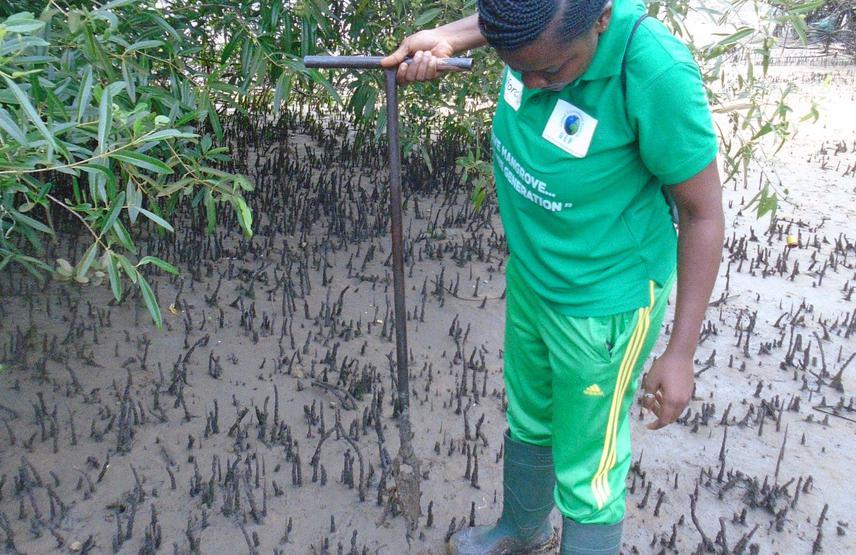Irene Franceline Mbouwe
The study will contribute to evaluate the mangrove regeneration dynamics, the influence of tides and the accounting of carbon stocks on the island of Manoka in Cameroon. It will be realized through out household survey, floristic inventories, dynamic regeneration assessment and accounting of carbon biomass.

The mangrove area contains all species of mangroves of the Cameroonian coast and a strong forest stratification. These native species that form the woody floristic background of Cameroon's mangroves in particular and the Atlantic coast in the Gulf of Guinea in general constitute among others: Rhizophora mangle, Rhizophora racemosa, Avicennia germinans, Laguncularia racemosa, Nypa fruticans (introduced species become invasive) and fern Accrostichum aureus which forms a large settlement there.
These mangroves species are very exploited by local population. In view of its flora and fauna diversity, Cameroon's mangroves are facing ever-increasing pressure. Urbanisation, sand extraction, exploitation of wood for smoking of fish, construction of houses, building of canoes encroach enormously upon the vegetation and contribute to the loss of biodiversity. The degradation observed would have a considerable impact on the quantities of carbon sequestered in this ecosystem.
The study will contribute to evaluate the mangrove regeneration dynamics, the influence of tides and the accounting of carbon stocks on the island of Manoka in Cameroon. It will be realized through out household survey, floristic inventories, dynamic regeneration assessment and accounting of carbon biomass.